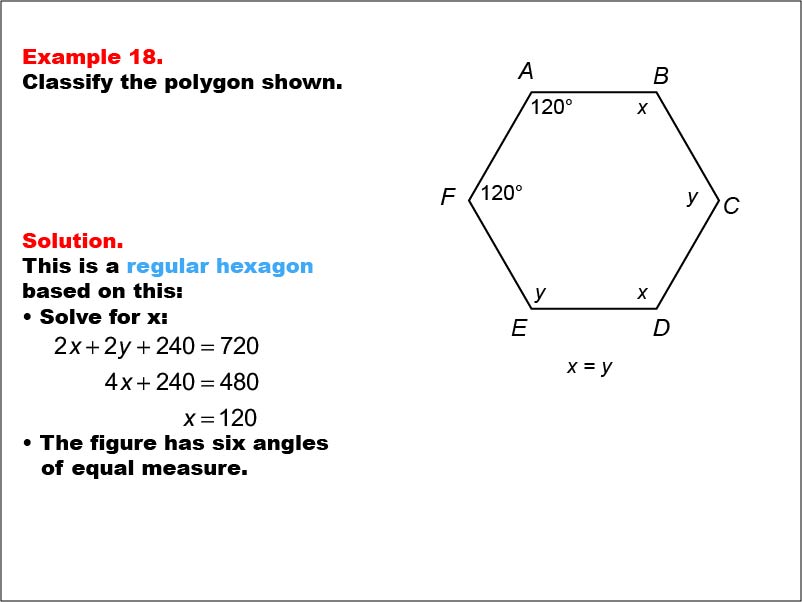
Display Title
Math Example--Polygons--Polygon Classification: Example 18
Display Title
Math Example--Polygons--Polygon Classification: Example 18

Topic
Polygons
Description
This example features a hexagon with two angles labeled as 120 degrees and sides labeled x and y, where x = y. It demonstrates how to determine if a hexagon is regular by solving for the unknown angle measures and confirming equal side lengths.
Polygon classification is a crucial topic in geometry that helps students distinguish between regular and irregular shapes. This collection of examples provides a comprehensive look at various types of hexagons, highlighting the importance of both angle measures and side lengths in determining regularity.
Exposure to multiple worked-out examples is essential for students to develop a thorough understanding of polygon classification. Each example presents a unique scenario, allowing students to apply problem-solving skills and reinforce their knowledge of regular polygon properties.
Teacher's Script: Let's examine this hexagon, class. We see two angles marked as 120 degrees and sides labeled x and y, with x = y. How can we determine if all angles are equal? Let's work through the problem-solving steps together to classify this polygon and understand why it's considered regular.
For a complete collection of math examples related to Polygons click on this link: Math Examples: Polygon Classification Collection.
| Common Core Standards | CCSS.MATH.CONTENT.5.G.B.3, CCSS.MATH.CONTENT.7.G.B.6 |
|---|---|
| Grade Range | 6 - 8 |
| Curriculum Nodes |
Geometry • Polygons • Definition of a Polygon |
| Copyright Year | 2013 |
| Keywords | polygons, classification |